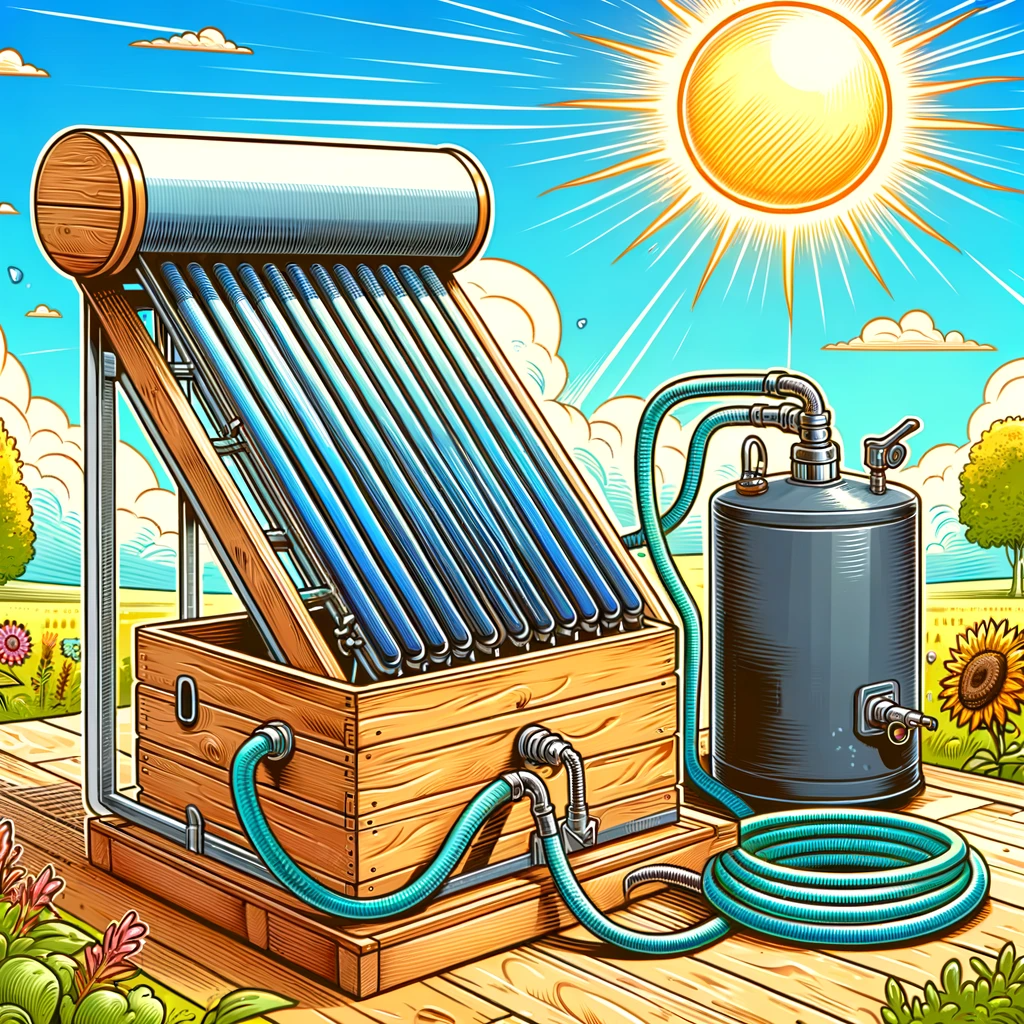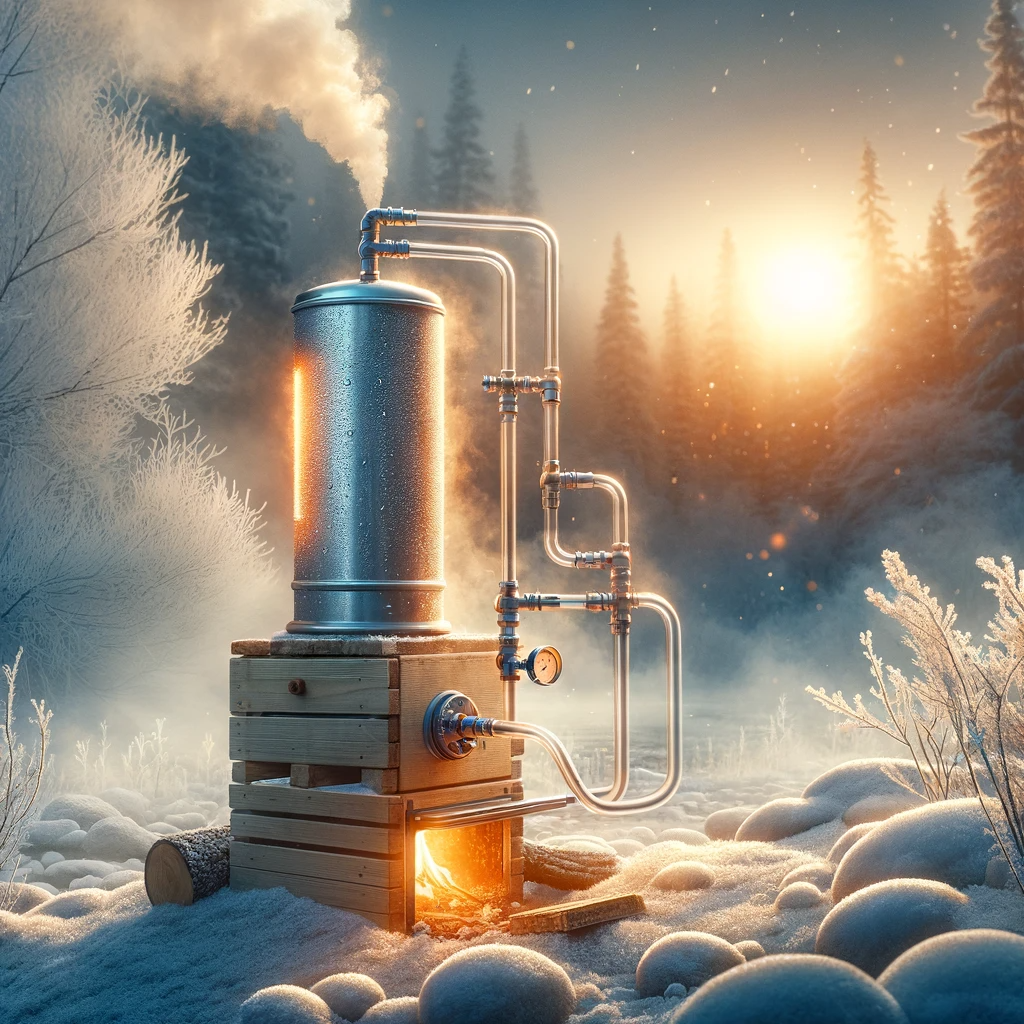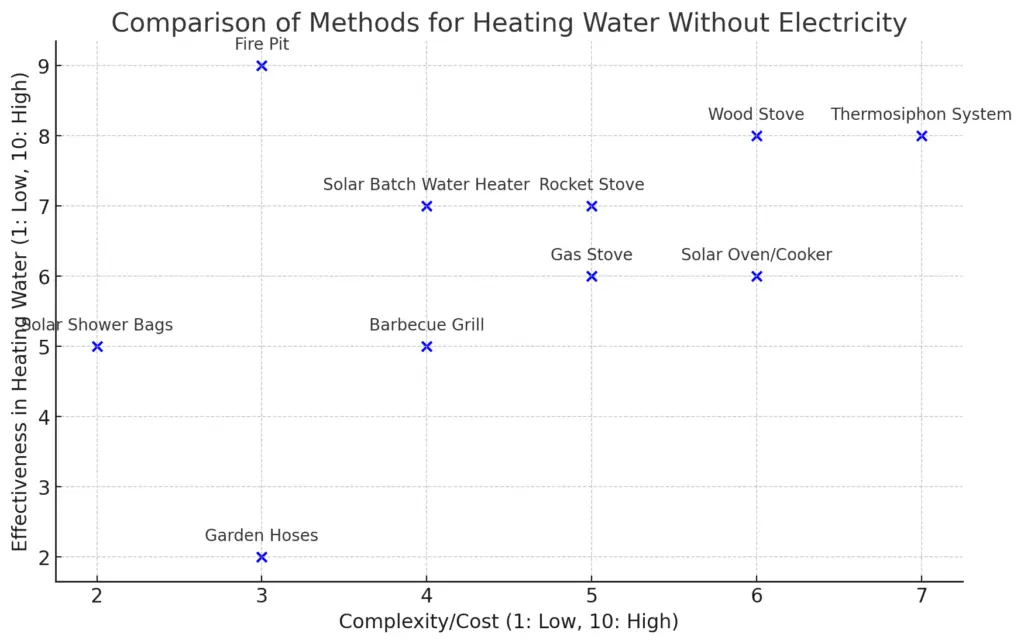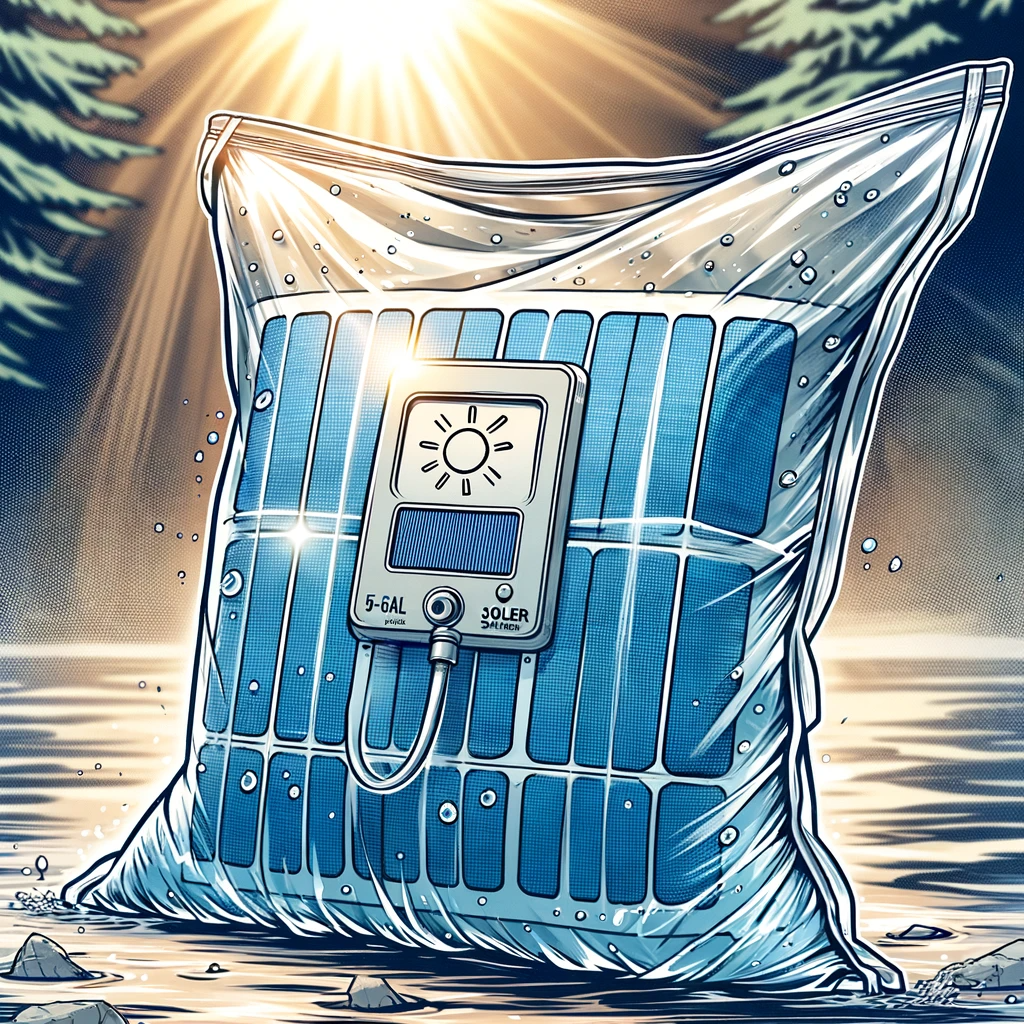Table of Contents
Imagine you are living your typical day-to-day routines, and suddenly, there has been a disaster. The entire power grid in your district was destroyed. You won’t have power for weeks or months. You will need to find an alternative power source to heat your water for cooking, bathing, and drinking (for tea lovers)! So how do you heat water without electricity?
To heat water without electricity, you can use various stoves, grills, water batch heaters, solar shower bags, tubing and piping, close-coupled systems, or gravity-fed systems. It would be wise to know a bit of heat physics so that you can think outside the box when deciding on how you want to heat your water.
Understanding what methods work for different climates is also crucial. Furthermore, you will also need to be aware of various equipment, tools, and appliances that will allow you to heat your water. Beware that some methods are more expensive than others, depending on what kind of system you choose to use.
Suppose you are a city dweller, homesteader, prepper, or someone who cares about yourself and your family. In that case, you need to know how to heat water without electricity. Here is a breakdown of the different ways to do this yourself.
How To Heat Water Without Electricity In The Summer And Warmer Climates?

Batch Water Heater
Solar Batch Water Heaters are an excellent alternative to heat your water without electricity. It is a simple method to heat your water, especially if you are in warmer climates or during the hot summer months. You can easily DIY, only needing to spend a couple hundred dollars at most for supplies.
As I mentioned already, the setup is simple. You will need to have a wooden box with Styrofoam insulation, a new or used water heater tank painted black, some hoses to connect to your home and water overflow, some valves for pressure release, and refletix insulation.
By positioning the refletix glass at a 20-degree angle toward the sun, solar radiation will be reflected to the water tank. Coldwater from your home will enter the tank and be heated by solar heat. The less-dense hot water will rise (this is known as convection) in the tank, and water will enter the hose running into your home, giving you nice hot water. I would recommend this for long-term sustainability!
Solar Shower Bags
These water bags are pretty neat as they are generally convenient. They are marketed for camping, but these shower bags is another budget-friendly option for heating water without electricity. These bags are usually about 5-gallons and are made from plastic, so they are very affordable.
You simply fill them up with water and let them in the sun to warm up. It can get to temperatures of up to 120ºF. These bags are versatile. The heat-absorbing technology works excellent even on cooler days, as long as there is enough sunshine.
Something to be aware of is that internet reviews show that although these bags do provide hot water if there is shade, the temperature will drop about 5ºF per hour. This also means you will want to use it when the sun is still out.
Otherwise, during the evening, the temperature will cool down significantly. If you have a couple of these at your house or at a campsite, you will have plenty of hot water. Since they are durable, I would recommend these for long-term use as well!
Solar Oven/Cooker
Solar ovens are generally thought of as a fun science experiment you can do with your kids. They are fun to assemble, especially since you can even make them out of cardboard boxes. But you can use these solar ovens to heat your water without electricity.
More sophisticated cookers are called parabolic solar cookers, which involve a convex shape mirror from either glass or polished metal. These cookers also rely on unique heat physics such as convection (rising heat), conduction (direct heat transfer from touching objects), and/or greenhouse radiation (trapped heat).
This may be an excellent alternative source of water heating since it costs nothing to operate, as your energy source comes from the sun. If you’re in warmer climates or places with lots of sunshine, this will be a perfect method for you.
These cookers can generate up to 350 ºF of heat if built correctly. For most DIY cookers, you will mostly get about 200 ºF. It can take a few hours to build up heat, depending on how much water you need. Nonetheless, your water will definitely be hot and ready to be used!
Garden Hoses
Some people advocate this method since it is budget-friendly, but some caveats to this should be noted. For many gardeners out there, you know that if you leave your garden hose lying outside in the hot summer weather, the water will be really hot the next time you use it.
Essentially you have free hot water inside your hose that can technically be used. However, you should be aware that most garden hoses are made of vinyl, which is not really good at handling hot temperatures. This means that some vinyl will leach into the water, which is not ideal for human health.
Some hoses are made of rubber or polyurethane, better suited for hot water. However, even these are not leech proof either. But if you have an emergency during the summer where you don’t have hot water, you could use these for bathing with minimal toxicity risk. So just be aware this method of heating water is sketchy and I do not recommend this for long-term sustainability.
What Is The Best Way To How to Heat Water Without Electricity During The Winter?

For those living in colder climates and maybe not have enough sunlight to produce heat, or you are curious about how to heat water without electricity during the winter, consider these options.
Thermosiphon System
Thermosiphon is a fancy word for heat transfer through air or water. That heated air or water rises, causing some movement. The solar water batch heater mentioned earlier is an example of a thermosiphon system.
However, the water batch heater may not be the most feasible option available for winter and colder climates. There are other ways to go about that.
If you are a handy person, you can connect metal tubing from a water heater to a small stove. You can use a metal coiling tube and place it inside the stove. Then join the metal tubing to that metal coil tube to allow water to be siphoned through to wherever it needs to go. You will need to provide the energy to the stove by burning wood.
Using a fire stove will quickly heat up your water. Still, it is important to remember that this siphoning process does take some time, especially if you need lots of water to fill up a standard 50-gallon tank. Nonetheless, this is a great way to heat your water without electricity and great for long-term sustainability.
Rocket Stove
You can use rocket stoves to heat your water without electricity. Rocket stoves are probably one of my favorites out of all fire/gas-powered ways of heating water. This is because of how efficient these guys are. Rocket stoves are made up of 3 primary parts.
The intake is a tube opening where you put your fuel (wood) and allow oxygen to enter. Inside is the combustion chamber, where things burn. Then there is a chimney, where the heat can rise. There is also an outer covering that allows for good insulation.
The intake tube provides a constant stream of fresh oxygen to feed the fire. If built right, the burning will produce minimal excess smoke since the intake tube and combustion chamber allows for efficient burning. So all the extra smoke from the fuel is burnt up before it can escape from the chimney.
There are countless ways to DIY these rocket stoves, but you can also purchase them for relatively cheap online. These stoves can be made big or small to be portable. Since they are very efficient, you need very little wood or fuel source compared to other ways of heating like fire pits.
Gas Stove
Gas stoves are perfect for outdoor cooking and are famous for camping and backpacking trips. They can be portable and straightforward to use. Just make sure you do not cause any explosion! You can easily use these stoves to heat water. People have been heating water this way for decades.
You just need to know how to use it safely since you’re dealing with highly flammable and pressurized gases. If you’re planning to use gas stoves for a camping trip, heating water without electricity is no problem.
If you have an emergency or plan to not use electricity for a long time, then there are some things you need to be aware of about gas stoves. First, they require butane or propane as the fuel source. The propane price has been rising over the last couple of decades to about an average of $3/gallon in 2022. Butane generally runs a little bit more expensive than propane.
It may not be so sustainable if you are constantly buying these fuels. However, it is a decent alternative to heat water without electricity.
Wood Stove
Wood stoves are also able to heat your water without electricity. They are a common and popular appliance for homesteaders. They are generally built out of cast iron, so they conduct heat very well.
Wood stoves are very reliable and very durable if you provide the maintenance it needs. They are more complex than rocket stoves, composed of many more parts. But they give so much heat that they can heat up a whole house or the entire first floor of a typical two-story home.
If you have pots available to fill up water with, place it on a wood stove, and you will get nice hot water for your showering and/or drinking needs.
If you are thinking of going portable, you can purchase smaller wood stoves or, better yet, make your very own. There are several ways you can make your own wood stove. Whatever you choose, wood stoves are an excellent way to heat your water without electricity.
Barbecue Grill
A good old-fashioned grill is another option to heat water without electricity. As long as you have the suitable materials and can start a fire, you can definitely heat whatever you need to.
Therefore, this is better suited for camping trips and may not be best for long-term sustainability. However, this might be a feasible way to heat your water quickly in the wintertime since fire heats up water much quicker than solar methods previously mentioned.
Some barbecue grills are gas-powered, so you must keep propane or butane costs in mind. As long as you are aware of that and are okay with waiting for your water to heat up and store them, this is an excellent alternative to heating your water without electricity.
Fire Pit
You can also resort to the traditional fire pit to heat your water without electricity. This method is so reliable that humans have been doing this ever since they began to exist!
Fuel can be whatever is reasonable to destroy safely. This way is definitely more labor-intensive than the other ways mentioned, so it is not the most convenient. But it is always a good skill to know how to build a good fire.
In case any or all of the methods of heating water fail, you can always use matches, sticks, or magnesium starters to build yourself a fire and heat your water for showering, cooking, or cleaning.
Fire pits are generally simple to make, and they can be small or large, depending on how much water you need to heat up. So if you are up to gathering lots of wood and smelling like smoke after laboring, this will be great for you!

FAQ: How To Heat Water Without Electricity
- What are the main methods for heating water without electricity?
- The article discusses various methods including using stoves, grills, batch water heaters, solar shower bags, tubing and piping systems, close-coupled systems, gravity-fed systems, and understanding basic heat physics.
- Why is it important to understand different climates when heating water without electricity?
- Different methods work better in varying climates. Understanding this helps in choosing the most effective and efficient method for your specific situation.
- What is a Batch Water Heater and how does it work?
- A Batch Water Heater is a DIY method ideal for warmer climates or summer months. It involves a wooden box with insulation, a black-painted water heater tank, hoses, valves, and reflective insulation, using solar radiation to heat the water.
- Are Solar Shower Bags a viable option for heating water?
- Yes, these 5-gallon plastic bags are affordable and can heat water to up to 120ºF using sunlight, making them a budget-friendly option for heating water.
- Can you use a Solar Oven/Cooker to heat water?
- Yes, solar ovens or cookers, including parabolic solar cookers, can be used to heat water. They rely on convection, conduction, and greenhouse radiation, generating significant heat from the sun.
- Is it safe to use garden hoses to heat water?
- While garden hoses can heat water in hot weather, most are made of vinyl which can leach into the water. This method is considered risky and not recommended for long-term use.
- What are the best methods to heat water without electricity in winter?
- For colder climates, options include Thermosiphon Systems, Rocket Stoves, Gas Stoves, Wood Stoves, Barbecue Grills, and traditional Fire Pits.
- How does a Thermosiphon System work for heating water?
- It involves heat transfer through air or water, where heated air or water rises, causing movement. This system can be connected to a stove with metal tubing for efficient water heating.
- Why are Rocket Stoves efficient for heating water?
- Rocket Stoves are efficient due to their design, which includes an intake tube, combustion chamber, and chimney, allowing for minimal smoke and efficient fuel use.
- Are Wood Stoves effective for heating water?
- Yes, wood stoves, especially those made of cast iron, are effective in heating water and can also warm a house.
- Can Barbecue Grills be used to heat water without electricity?
- Yes, but they might not be the best for long-term sustainability. They are more suitable for quick heating in situations like camping.
- What is the traditional method of heating water without electricity?
- The traditional method involves using a Fire Pit, which is labor-intensive but reliable and can be used in any situation where other methods fail.

Leave a Reply